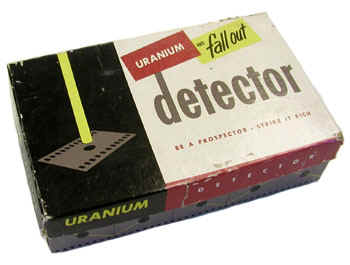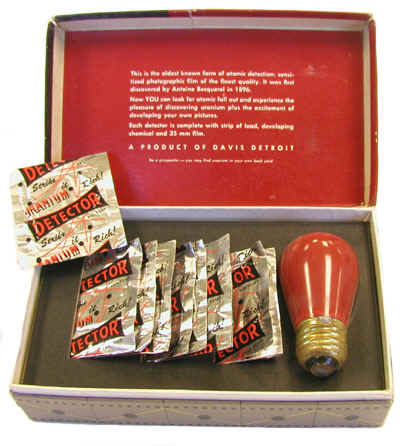Uranium and Fallout Detector (ca. 1950s)

This neat device was produced, probably in the mid to late 1950s, by the Davis Detroit Company of, you guessed it, Detroit Michigan.
Size: 4 1/2" x 7 1/2" x 2"
The inside of the box reads: "This is the oldest form of atomic detection: sensitized photographic film of the finest quality. It was first discovered by Antoine Becquerel in 1896. Now YOU can look for atomic fall out and experience the pleasure of discovering uranium plus the excitement of developing your own pictures. Each detector is complete with strip of lead, developing chemical and 35 mm film."

The small instruction booklet reads:
- TO LOOK FOR URANIUM: Place the instruction side of the Detector down on the ground or on a rock. Place a weight on top. Leave out for 24 hours or longer.
- TO LOOK FOR ATOMIC FALL OUT: Place the Detector face down, preferably in a gutter. Leave out for 24 hours or longer.
Each aluminum foil packet contains a piece of 35 mm film that is partially covered with a lead strip, and a paper tape saturated with the necessary chemicals to develop the film. The lead has a small 3/8" diameter hole in it. In a darkened room, illuminated only by the red light, the paper tape is placed in a cup containing 3 teaspoons of water for 60 seconds. The exposed film is them placed in the solution for one minute and then rinsed. The appearance of a dark circular dot on the processed film indicates that uranium or fallout was present. Simple!
